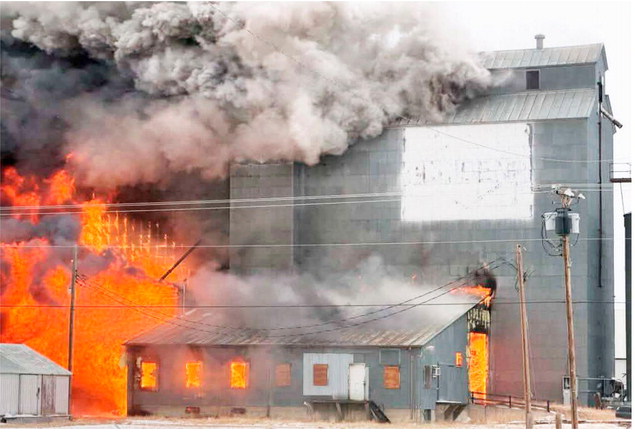Control Needed As Grasshoppers Continue To Devastate Cropland
During meetings in Washington earlier this month, the Montana Farm Bureau continued to stress the need for grasshopper control while visiting with Congressional leaders. In talking with Sen. Jon Tester and Rep. Matt Rosendale, and with the staff of Sen. Steve Daines’ and Representative Ryan Zinke’s offices, Farm Bureau leaders explained the negative impact of the destructive insects and the need for help with control.
“It’s clear that our outcry for grasshopper control is being heard, but in this tight budgeting process, securing additional funds is more difficult than it would seem. We recently learned that around 550,000 acres have been treated through USDA APHIS’s Grasshopper Suppression Program in Montana during FY2024. While that is helpful, there are hundreds of thousands of additional acres which would have benefited from the cost share program, had it been funded more substantially. That’s why we are asking for additional funding in FY2025, and are also asking for direction to APHIS, guiding them to prioritize funding to areas with the greatest infestations,” said MFBF senior director of governmental affairs Nicole Rolf, who had been in Washington with MFBF president Cyndi Johnson.
According to the map of USDA Animal and Plant Inspection Service, the majority of Montana has a grasshopper infestation; parts of eastern Montana are seeing 15-plus grasshoppers per square yard.
“The scale by which APHIS counts grasshoppers measures levels of economic impact. Fifteen grasshoppers per square yard is their maximum count because at that level, they predict severe losses. In talking to Farm Bureau members around the state, we know that infestations are much higher than that with some counts at 50 ‘hoppers or greater,” added Rolf.
Efforts are still underway to add funding to the 2025 Budget, and directive language has been added, requiring APHIS to direct funding to areas most greatly impacted by grasshopper populations. The Senate version of agriculture appropriations, which was passed on July 11, does not include increased funding. However, last week, a manager’s amendment was added to the House Ag Appropriations bill, increasing funding for the program by $1.5 million dollars for the suppression and control of grasshoppers and Mormon crickets on private and public lands.
“This is fantastic news for the farmers and ranchers of Montana and throughout the West. Now we just need to make sure it is included in the final appropriations legislation with the House and Senate conference,” Rolf stated.
Daniel Munch, economist for the American Farm Bureau, researched grasshoppers and shared information about their devastating impact. He published an article regarding the insects’ economic effect on agriculture in the West and efforts to manage and mitigate their populations.
“When learning U.S. history, narratives of vast swarms of locusts ravaging millions of acres of farmland are often recounted. Not all grasshoppers are locusts, and the swarms aren’t quite as big as they were in the 1800s, but grasshoppers and Mormon crickets remain a persistent risk to agriculture, inflicting significant damage to rangeland and crops,” Munch explained.
Grasshoppers compete with cattle and other herbivores (including wildlife like deer and elk) for forage and are more likely to become a threat in areas with less than 30 inches of rainfall annually. They can consume up to 50 percent of their body weight each day. Just 30 pounds of grasshoppers will eat as much as a 600-pound steer in a day. Grasshoppers are an even bigger menace to crop farmers and ranchers on public and private lands when drought conditions are added to the mix.
“Grasshopper and cricket outbreaks not only result in the physical destruction of forage and crops but also contribute to soil erosion and degradation, disrupt rangeland nutrient cycles, and impede rangeland water filtration, which can have lasting impacts on rangeland ecosystems,” Munch explained. “Western landowners face heightened risks from grasshoppers due to the substantial amount of federally owned land in the region. In the absence of grasshopper and cricket management on federal lands, insects can migrate onto private lands, undermining the effectiveness of common private pest management efforts.”
Through the Plant Protection Act of 2000, APHIS has the congressional mandate to control grasshoppers on rangelands via the Rangeland Grasshopper and Mormon Cricket Suppression Program. The program offers treatments for federal, state and private rangelands through a cost-share model within APHIS when funding is available.
Munch noted that information on current economic impacts of grasshoppers on agriculture is limited. “Generally, monetary losses either fall under the value of crops or rangeland consumed by insects that could no longer be sold on the market or consumed by ruminants to produce meat or wool and the cost to treat populations that have reached pest-concern levels,” said Munch.
“In total, conservative estimates put production value losses in 2023 due to grasshopper infestations at $318 million,” Munch noted. “This represents a baseline number with true impacts likely hundreds of millions of dollars higher. Losses of this magnitude are detrimental to operations already operating on small and often negative margins and reveal the true threat of these insects on farmers’ and ranchers’ livelihoods.”
“The economic impact of these insects on rangeland and crops remains significant, with millions of dollars in losses reported annually across affected counties,” Munch said. “Continued coordination and efforts among the federal government, states and private landowners is essential to safeguarding the livelihoods of farmers and ranchers against these small but hungry pests.”

